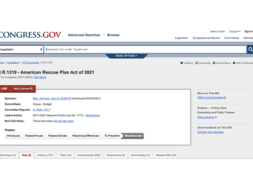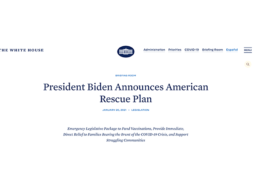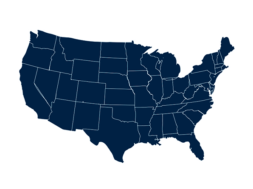
Planning for the Unthinkable: Private Sector Institutions are Uniquely Vulnerable to Active Shooter Incidents on Campus
By Peter S. Leyton, Esq., and Stephen T. Chema II, Esq., Ritzert & Leyton, PC
In 2015, there were 330 verified mass shooting incidents in the United States.1 In a study examining the problem of active shooter incidents, the FBI defined “active shooter incidents” as incidents involving “an individual actively engaged in killing or attempting to kill people in a confined and populated area.”2 Analyzing data from incidents occurring between 2000 – 2013, the FBI observed that over 70 percent of active shooter incidents occurred in two categories of locations: educational environments (24.4 percent of incidents) and businesses that were open to pedestrian traffic (45.6 percent of incidents).3
Because private sector career schools often fall within both categories, it may be reasonable to conclude that they are at heightened risk of experiencing an active shooter incident. For this reason, private sector institutions need to understand both the risks they face and the scope of the institution’s legal responsibility to respond appropriately to an active shooter incident.
The difference between an institution that understands and prepares to face the threat of a possible active shooter incident by planning accordingly and an institution that fails to do so, could be measured in lives saved or lost.
The school’s obligation to respond to an active shooter role under the Clery Act
The Jeanne Clery Disclosure of Campus Security Policy and Campus Crime Statistics Act or “Clery Act” is a federal law incorporated in section 485(f) of the Higher Education Act of 1965, as amended, which creates responsibilities for institutions that are triggered by an active shooter event. By definition, an active shooter incident is a reportable Clery Act offense which must be included in the institution’s Annual Security Report (“ASR”) in one or more of the following categories: murder, attempted murder (which is classified as aggravated assault), or weapons violations. These offenses when occurring on campus or within the institution’s Clery Act geography must be disclosed in the ASR.
The Clery Act also creates duties that relate to an institution’s immediate response to an active shooter incident. Institutions must establish and disclose emergency response and evacuation procedures which explain what steps the institution will take in response to significant emergencies or dangerous situations that pose an immediate threat to the health and safety of students and employees. Neither the Clery Act nor the Department of Education in regulations implementing the Clery Act, specifically prescribe the manner or content of an institution’s response and evacuation procedures.
However, it is clear that institutions must develop appropriate procedures to notify and warn members of the campus community of threats and to minimize harm to members of the campus community. Institutions must regularly evaluate the appropriateness of their publicly disclosed plans and procedures by testing and reviewing them in response to specific threat scenarios.
Among the components of an institution’s emergency response plan under the Clery Act are the institution’s procedures and capabilities to provide “emergency notifications” and “timely warnings” to the campus community.
Although they sound similar, timely warnings and emergency notifications are distinct requirements with separate purposes.
Institutions must give emergency notifications when an event is occurring on campus that poses an imminent threat to the health and safety of students. In contrast, timely warnings must be given when the institution receives a report via campus security authorities or local law enforcement that a crime has occurred in the institution’s Clery geography which is believed to represent a serious or continuing threat to students and employees. Timely warnings must be issued for crimes that constitute threats to persons and property and, in this way, they differ from an emergency notification which involves threats to health and safety. However, only criminal offenses that are reportable under the Clery Act require a timely warning.
In the case of an active shooter incident, an institution should issue an emergency notification pursuant to its emergency notification procedures. A timely warning for the same incident would not be necessary. However, the institution is obligated to provide updated information to the campus community as it learns more about the events unfolding on campus.
Failure to provide emergency notifications exposes the institution to sanctions
The Clery Act does not provide for a private right of action, meaning institutions may not be sued by students or employees for Clery Act violations. However, the Department of Education has been devoting increased attention to Clery Act compliance and has revealed that it employs a multi-faceted enforcement strategy consisting of assessing compliance as a routine part of Title IV program reviews, initiating focused reviews in response to complaints from students, employees, or the public, and monitoring media reports of incidents occurring on campuses. The Department has established a special team to review preliminary Clery Act violations and to assess whether to impose fines of up to $35,000 per violation, or take other additional actions to limit, suspend, or terminate an institution’s Title IV participation.
According to the Department, significant Clery Act violations may also form the basis to deny an institution’s application for recertification to participate in Title IV programs, or to revoke an institution’s program participation agreement if that institution is on provisional status.
Because an active shooter event will certainly garner considerable media attention, an institution’s failure to appropriately respond in compliance with the Clery Act will be noticed by the Department.
Institutions have state law duties to respond to an active shooter incident
Although state laws vary as to the extent to which a postsecondary institution is liable for harm caused to students or employees, the majority of jurisdictions apply concepts from the law of landlord-tenant relationships or the business-invitee relationship to establish that schools owe a duty of reasonable care to protect students and employees from foreseeable risks of harm, such as the harm that could arise from an active shooter. In the aftermath of active shooter incidents, victims and their families have brought actions for negligence and wrongful death against the institutions where these crime occurred. Whether the risks of an active shooter event at a postsecondary institution are foreseeable is a fact based determination that can only be made on a case-by-case basis.4
As noted above, there is evidence to suggest that educational environments are among the most frequently occurring locations for an active shooter event. Further, the Clery Act requires institutions to be aware of and to share information regarding criminal activity on and near campus. Coupled with the Clery Act’s mandate that schools establish effective emergency response plans, the heightened awareness of criminal activity may lead to a conclusion that institutions should be aware of the possibility that an active shooter incident could occur on campus. In the current environment, failure to plan effectively for, and respond to such a possibility may conceivably expose the institution to further liability under state tort laws.
What to include in an emergency operations plan?
Institutions must be prepared to meet the requirements of the Clery Act as well as the institution’s duty of reasonable care to protect students and employees from the dangers of an active shooter. Seventy percent of the active shooter incidents described in the FBI’s study lasted five minutes or less, and roughly one-third of those incidents ended within two minutes. These incidents are inherently unpredictable and chaotic. Institutions simply cannot expect to be able to appropriately react to an active shooter incident on the fly. A crucial tool to enabling an effective response to an active shooter incident, or any other event that triggers the need to send emergency notifications, is an emergency operations plan (EOP). The EOP is a document that explains who will do what, when they will do it, how they will do it, and what resources will be used – before, during, and in the immediate aftermath of an emergency.
In the context of an active shooter incident, an institution’s EOP should include (but need not be limited to) the following:
- How to evacuate or lock down students, staff, and visitors
- How to evacuate when the primary evacuation routes are unusable
- How to select effective shelter-in-place locations
- How the campus community will be notified that there is an active shooter on campus
- How students and staff will know when buildings and campus grounds are safe.5
The best option to develop a well-conceived EOP is to empower a planning team that represents stakeholders from departments across the institution such as Academics, Administration, Human Resources, Student Affairs, Facilities and Operations, Security/Public Safety, et cetera.
Institutions should keep in mind when assembling the planning team that some representatives may be external to the institution itself, such as first responders, law enforcement agencies, landlords, property managers, among others.
Once the planning team is assembled, the next step is to identify the various threats facing the institution and the institution’s specific vulnerabilities. Throughout the planning process it is important keep a focus on the attributes of the campus community. Based on this threat assessment exercise, the institution should establish the goals and objectives of the EOP.
In the context of an active shooter situation these might include, a) recognizing warning signs and other red flags to allow for the possibility of intervention to prevent a potential active shooter situation; b) raising security awareness on campus; c) responding to an active shooter to prevent injury and loss of life to the greatest extent possible; and) and taking positive steps in the aftermath to heal the campus community. Institutions may also want to consider their official position regarding whether or where firearms are permitted to be carried on campus, especially in states with permissive conceal carry laws.
Once the EOP has been developed through the collaborative processes of the planning team, the written plan should be circulated to stakeholders and senior management for review. This process can mirror what institutions typically do when preparing an institutional self-study for accreditation purposes and with the same intended result – that critical feedback and refinements to the draft be proposed before it is put in final form. Once finalized, the plan should be publicized to students and staff. The emergency notification and evacuation procedures should be tested and evaluated based on the data the institution obtains from those tests.
It is important that the institution does not bypass the “rollout” of the EOP to students and staff and proceed directly to the testing phase. It is also important to keep in mind the sensitivities of the campus community when testing the EOP for active shooter incidents. Recently a number of lawsuits have arisen in which plaintiffs accuse their employers or institutions of traumatizing them during active shooter drills and simulations, which the plaintiffs claim were excessive in the manner in which they were carried out.6
Conclusion
Institutions have a clear responsibility to be prepared for the possibility of an active shooter situation. Although these events are statistically rare, private sector career schools may be uniquely vulnerable to active shooter incidents. Therefore, institutions should develop comprehensive EOPs that contemplate the possibility of an active shooter event as a blue print for preventing, thwarting, and surviving these horrific crimes.

PETER S. LEYTON , firm co-founder, focuses his practice on postsecondary education law. He has represented many institutions of higher education, as well as associations of schools and private investment groups, with respect to regulatory, compliance and transactional matters. His work involves interaction with the U.S. Department of Education (DOE), national, regional and programmatic accrediting agencies and state licensing agencies, as well as other third parties. Mr. Leyton served on the Association of Private Sector Colleges and Universities (APSCU) Board of Directors from 1998-2000, 2002-2004 and 2010- 2012, and is actively involved in advising APSCU on legislative, regulatory and litigation matters, such as the DOE program-integrity regulations.
Prior to the founding of Ritzert & Leyton in 1994, Mr. Leyton was a partner in the law firm of White, Verville, Fulton & Saner, where his practice focused on postsecondary education. Before entering the practice of law, he was a senior program analyst with the U.S. Government Accountability Office, the investigative arm of Congress, where he focused on education. Mr. Leyton has written and frequently spoken on issues affecting postsecondary institutions of higher education, including contributions to Career Education Review and The Link. He has earned the AV® Preeminent™ Rating by Martindale-Hubbell®. An active member of the District of Columbia and Virginia bars, Mr. Leyton has been specially admitted to appear before numerous state and federal courts around the country. He received his Bachelor’s degree in Political Science from Antioch College, a Master’s degree in Public Administration from American University, and his law degree from Catholic University of America’s School of Law.
Contact Information: Peter S. Leyton // Senior Associate // Ritzert & Leyton, P.C. // 11350 Random Hills Road, Suite 400 Fairfax, VA 22030 // 703-934-9826 (direct) // PLeyton@ritzert-leyton.com

STEPHEN T. CHEMA II , advises clients on a wide array of matters related to compliance with student financial aid programs under Title IV of the Higher Education Act, including topics such as 90/10, the incentive compensation rule, institutional and student eligibility issues, and gainful employment. He also specializes in advising postsecondary institutions on compliance with privacy laws, including the Family Educational Rights and Privacy Act (“FERPA”), the Gramm-Leach-Bliley Act (“GLBA”), and the Federal Trade Commission’s “Red Flags” rule. In addition, his work involves counseling institutions on issues related to antidiscrimination and employment law, campus security and consumer protection. Mr. Chema also works extensively in the area of immigration law, specializing in business immigration in the following areas: non-immigrant visa petitions (including H1-B, L-1, E, O, P and TN); labor certification and permanent residency; I-9 compliance and worksite enforcement; and citizenship.
Mr. Chema is a member of the National Association of College and University Attorneys (NACUA), the American Immigration Lawyers Association’s D.C. Chapter, and the Young Lawyers and Administrative Law divisions of the American Bar Association. Mr. Chema, who is admitted to practice in Maryland, Virginia and the District of Columbia, received a B.A. from The College of the Holy Cross and a J.D. from The Catholic University of America.
Contact Information: Stephen T. Chema II, Esq. // Senior Associate // Ritzert & Leyton, P.C. // 703-934-9835 // stchema@ritzert-leyton.com
1Source: Gun Violence Archive available at http://www.gunviolencearchive.org/past-tolls (last viewed 1/27/2016). Gun Violence Archive defines “mass shooting” as: four or more individuals shot and/or killed in a single event [incident], at the same general time and location not including the shooter. See http://www.gunviolencearchive.org/methodology (last viewed 1/27/2016).
2U.S. Department of Justice, Federal Bureau of Investigation, “A Study of Active Shooter Incidents in the United States between 2000 and 2013”, 13 (Sept. 16, 2013).
3See id. at p. 5. The White House, Department of Justice, Department of Education and Federal Emergency Management Agency also recognize this definition of active shooter incident.
4Institutions should also evaluate their insurance coverage to determine if their current policies cover or exclude damages resulting from an active shooter incident.
5“Guide For Developing High Quality Emergency Operations Plans For Institutions of Higher Education” a joint publication of the United States Department of Education, United States Federal Emergency Management Agency, United States Department of Justice, and United States Department of Health and Human Services, p. 75-76 (June 2013).
6Frosch, Dan. “’Active Shooter’ Drills Spark Raft of Legal Complaints.” The Wall Street Journal. 4 Sept. 2014. Web. 26 Jan. 2016. These complaints typically arise out of exercises conducted by employers that use real weapons and in which individuals pretending to be active shooters threaten unsuspecting employees to simulate an authentic active shooter event.










